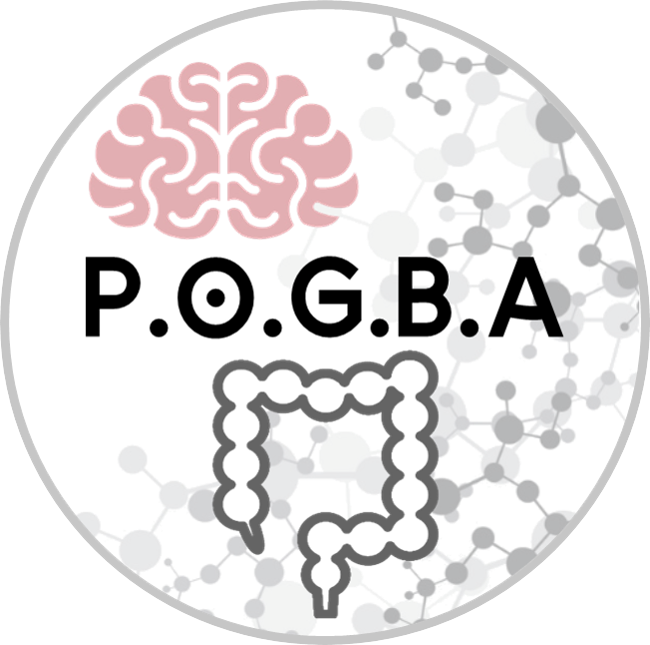Mini CV
2019: Master 2 Santé Digestive et Nutrition - Université Paul Sabatier Toulouse III
Master degree in digestive health and nutrition – Paul Sabatier Toulouse III university
|
expertise
|
Recherche/projet research/project
Identification d’enterosynes pour le traitement du diabète de type 2
Les entérosynes sont des molécules capables de cibler le système nerveux entérique, modifiant ainsi l’axe intestin-cerveau. En corrigeant cet axe qui est perturbé chez le diabétique, nous pouvons améliorer l’utilisation du glucose dans l’organisme.
Identification of enterosynes to treat type 2 diabetes
Enterosynes are molecules able to target the enteric nervous system in order to modify the activity of the gut-brain axis. Modulating this axis which is dusturbed during diabetes, we have the capacity to improve glucose utilisation in the whole-body.
Les entérosynes sont des molécules capables de cibler le système nerveux entérique, modifiant ainsi l’axe intestin-cerveau. En corrigeant cet axe qui est perturbé chez le diabétique, nous pouvons améliorer l’utilisation du glucose dans l’organisme.
Identification of enterosynes to treat type 2 diabetes
Enterosynes are molecules able to target the enteric nervous system in order to modify the activity of the gut-brain axis. Modulating this axis which is dusturbed during diabetes, we have the capacity to improve glucose utilisation in the whole-body.
Production scientifique scientific production
Proenkephalin deletion in hematopoietic cells induces intestinal barrier failure resulting in clinical feature similarities with irritable bowel syndrome in mice.
Xavier Mas-Orea*, Lea Rey*, Louise Battut, Cyrielle Bories, Camille Petitfils, Anne Abot, Nadine Gheziel, Eve Wemelle, Catherine Blanpied, Jean-Paul Motta, Claude Knauf, Frederick Barreau, Eric Espinosa, Meryem Aloulou, Nicolas Cenac, Matteo Serino, Lionel Mouledous, Nicolas Fazilleau, Gilles Dietrich
Communications Biology 2023
In Vivo Assessment of Antioxidant Potential of Human Milk Treated by Holder Pasteurization or High Hydrostatic Pressure Processing: A Preliminary Study on Intestinal and Hepatic Markers in Adult Mice.
Wemelle E, Marousez L, Lesage J, De Lamballerie M, Knauf C, Carneiro L.
Antioxidants (Basel). 2022
Glucose Stimulates Gut Motility in Fasted and Fed Conditions: Potential Involvement of a Nitric Oxide Pathway.
Wemelle E, Carneiro L, Abot A, Lesage J, Cani PD, Knauf C.
Nutrients. 2022
Camu-Camu Reduces Obesity and Improves Diabetic Profiles of Obese and Diabetic Mice: A Dose-Ranging Study.
Abot A, Brochot A, Pomié N, Wemelle E, Druart C, Régnier M, Delzenne NM, de Vos WM, Knauf C, Cani PD.
Metabolites. 2022
High Hydrostatic Pressure Processing of Human Milk Increases Apelin and GLP-1 Contents to Modulate Gut Contraction and Glucose Metabolism in Mice Compared to Holder Pasteurization.
Wemelle E, Marousez L, de Lamballerie M, Knauf C, Lesage J.
Nutrients. 2022
Interactions between the microbiota and enteric nervous system during gut-brain disorders.
Fried S, Wemelle E, Cani PD, Knauf C.
Neuropharmacology. 2021
Identification of new enterosynes using prebiotics: roles of bioactive lipids and mu-opioid receptor signalling in humans and mice
Anne Abot*, Eve Wemelle*, Claire Laurens, Adrien Paquot , Nicolas Pomie , Deborah Carper, Arnaud Bessac, Xavier Mas Orea, Christophe Fremez, Maxime Fontanie, Alexandre Lucas, Jean Lesage, Amandine Everard, Etienne Meunier, Gilles Dietrich, Giulio G Muccioli, Cedric Moro, Patrice D Cani, Claude Knauf, doi: 10.1136/gutjnl-2019-320230. PMID: 33020209
GUT. 2020
Targeting the Enteric Nervous System to Treat Metabolic Disorders? "Enterosynes" as Therapeutic Gut Factors
Claude Knauf, Anne Abot, Eve Wemelle, Patrice D Cani, doi: 10.1159/000500602 PMID: 31280267
Neuroendocrinology. 2020
Xavier Mas-Orea*, Lea Rey*, Louise Battut, Cyrielle Bories, Camille Petitfils, Anne Abot, Nadine Gheziel, Eve Wemelle, Catherine Blanpied, Jean-Paul Motta, Claude Knauf, Frederick Barreau, Eric Espinosa, Meryem Aloulou, Nicolas Cenac, Matteo Serino, Lionel Mouledous, Nicolas Fazilleau, Gilles Dietrich
Communications Biology 2023
In Vivo Assessment of Antioxidant Potential of Human Milk Treated by Holder Pasteurization or High Hydrostatic Pressure Processing: A Preliminary Study on Intestinal and Hepatic Markers in Adult Mice.
Wemelle E, Marousez L, Lesage J, De Lamballerie M, Knauf C, Carneiro L.
Antioxidants (Basel). 2022
Glucose Stimulates Gut Motility in Fasted and Fed Conditions: Potential Involvement of a Nitric Oxide Pathway.
Wemelle E, Carneiro L, Abot A, Lesage J, Cani PD, Knauf C.
Nutrients. 2022
Camu-Camu Reduces Obesity and Improves Diabetic Profiles of Obese and Diabetic Mice: A Dose-Ranging Study.
Abot A, Brochot A, Pomié N, Wemelle E, Druart C, Régnier M, Delzenne NM, de Vos WM, Knauf C, Cani PD.
Metabolites. 2022
High Hydrostatic Pressure Processing of Human Milk Increases Apelin and GLP-1 Contents to Modulate Gut Contraction and Glucose Metabolism in Mice Compared to Holder Pasteurization.
Wemelle E, Marousez L, de Lamballerie M, Knauf C, Lesage J.
Nutrients. 2022
Interactions between the microbiota and enteric nervous system during gut-brain disorders.
Fried S, Wemelle E, Cani PD, Knauf C.
Neuropharmacology. 2021
Identification of new enterosynes using prebiotics: roles of bioactive lipids and mu-opioid receptor signalling in humans and mice
Anne Abot*, Eve Wemelle*, Claire Laurens, Adrien Paquot , Nicolas Pomie , Deborah Carper, Arnaud Bessac, Xavier Mas Orea, Christophe Fremez, Maxime Fontanie, Alexandre Lucas, Jean Lesage, Amandine Everard, Etienne Meunier, Gilles Dietrich, Giulio G Muccioli, Cedric Moro, Patrice D Cani, Claude Knauf, doi: 10.1136/gutjnl-2019-320230. PMID: 33020209
GUT. 2020
Targeting the Enteric Nervous System to Treat Metabolic Disorders? "Enterosynes" as Therapeutic Gut Factors
Claude Knauf, Anne Abot, Eve Wemelle, Patrice D Cani, doi: 10.1159/000500602 PMID: 31280267
Neuroendocrinology. 2020






